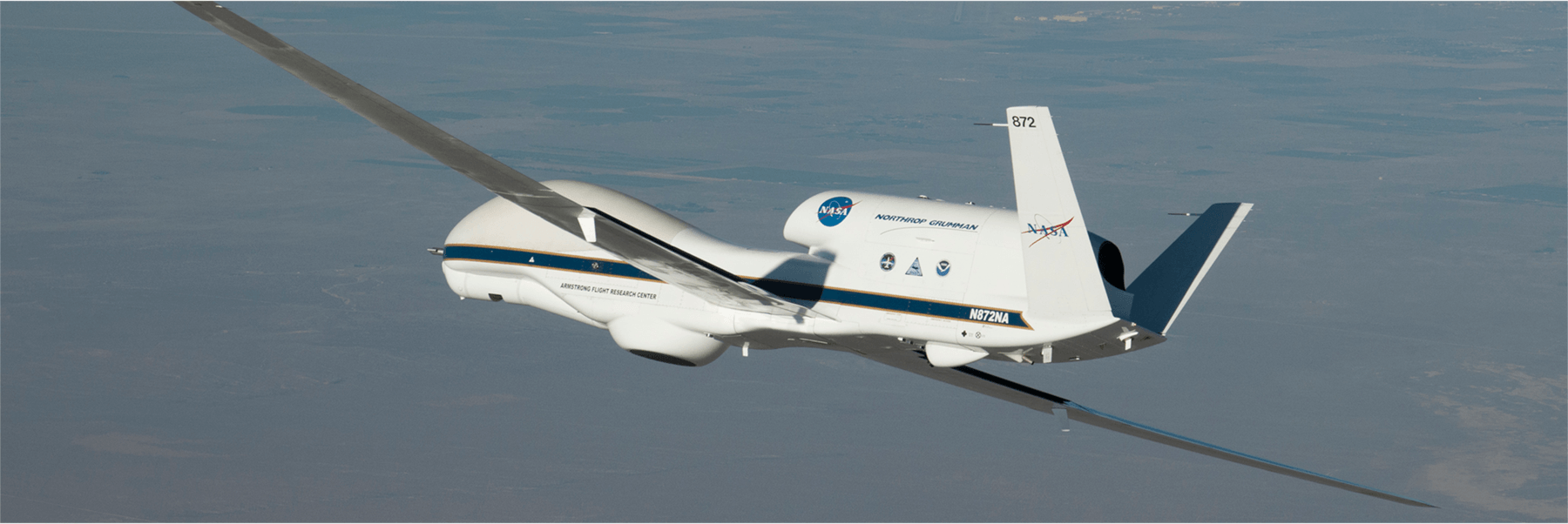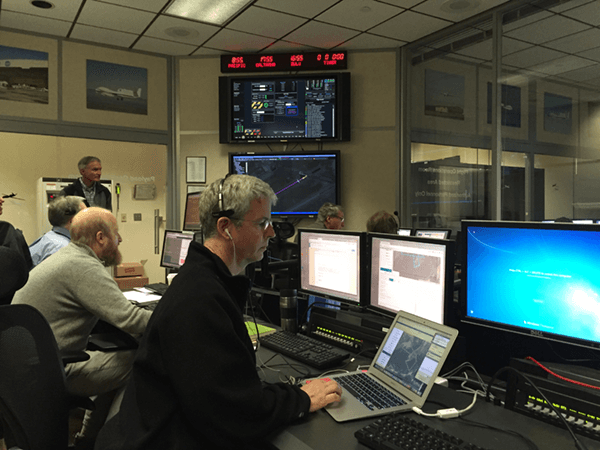Observations and forecast impacts from project that used autonomous high-altitude aircraft

During 2015 and 2016, NOAA conducted three field campaigns using the NASA Global Hawk autonomous aircraft outfitted with GPS dropwindsondes and remote sensors. The Sensing Hazards with Operational Unmanned Technology (SHOUT) project evaluated the potential ability of this high-altitude aircraft to collect novel observations to improve forecasts of high-impact weather events including hurricanes. The experiment also examined the effectiveness of employing new technology of this type.
A new article to be published in the Bulletin of the American Meteorological Society, led by ESRL PSL with multiple NOAA and cooperative institute co-authors, provides an overview of SHOUT and summarizes the various missions flown over the two-year campaign, the observations collected and their application, and the results of a diverse set of studies evaluating the impact of the data on multiple operational forecast systems.

The authors found that while more observations are ultimately required to enhance statistical significance, the analyses consistently demonstrated the potential for observations from uncrewed, high-altitude aircraft to improve forecasts in both regional and global models. Their results suggested that when observations were added, tropical cyclone forecasts improved by as much as 15 percent within the then-operational modeling systems. The results argue for the potential scientific merit of these observations.
Although NOAA has no immediate plans to operate a Global Hawk-type aircraft in the manner evaluated, it is highly beneficial to learn how to further improve forecasts of hurricanes and other high-impact weather events. Several of the lessons learned are being applied to improving operational concepts and refined tasking for NOAA’s traditional aircraft.
Wick, G. A., J. P. Dunion, P. G. Black, et al. (2020): NOAA’S Sensing Hazards with Operational Unmanned Technology (SHOUT) Experiment: Observations and Forecast Impacts. Bull. Amer. Meteor. Soc., https://doi.org/10.1175/BAMS-D-18-0257.1
Posted: March 16, 2020